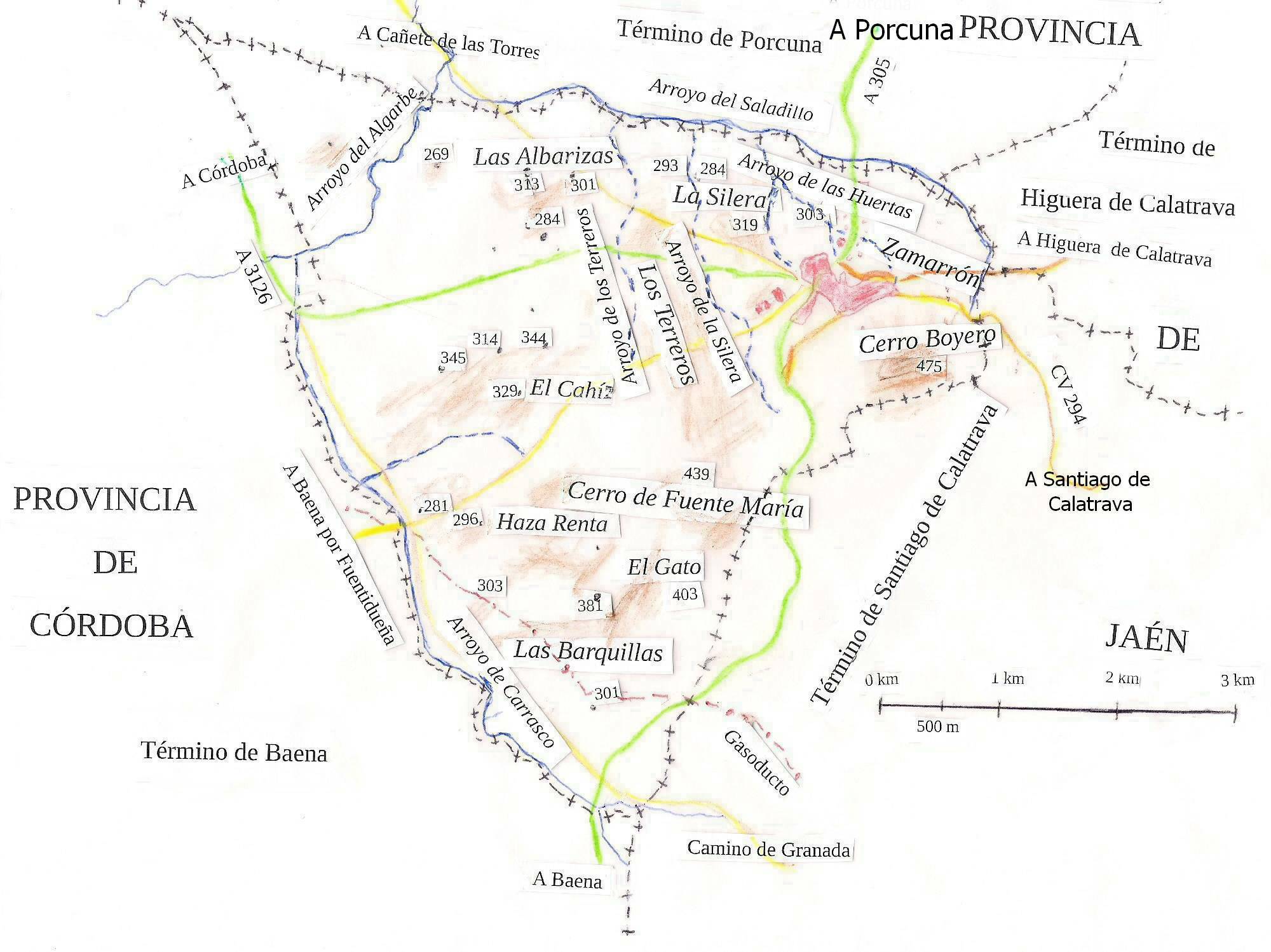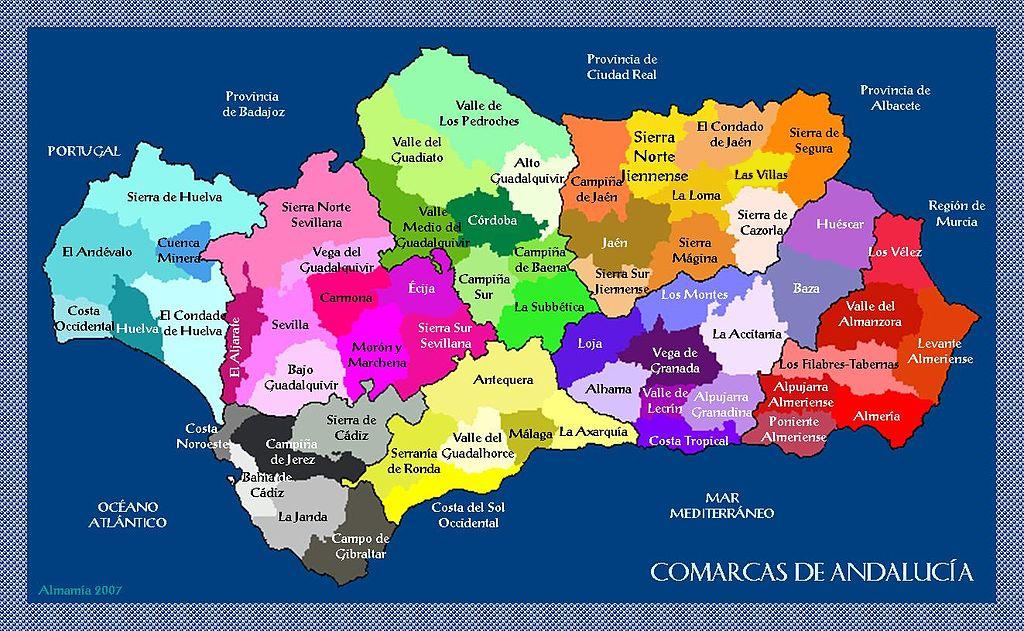|
Valenzuela, Spain
Valenzuela is a municipality in the province of Córdoba, Spain. In 2016 it had 1208 inhabitants. Its surface area is 19 km2 and has a density of 63.58 inhabitants / km². It is located at an altitude of 341 meters above sea level and 84 kilometers from the capital of the province, Córdoba. Belonging to the region of the East-Guadajoz Campiña. Located in the east of the province, its urban center sits at the foot of the Alto de la Dehesa or Cerro Boyero. The demonym is valenzoletana / o although the term "vinagorra / o" (derived from wine or biznaga) is used more. Toponymy In Spanish, ''Valenzuela'' is a diminutive form of Valencia which means "little Valencia". . Alternative URL can be found iAncestry.com/ref> Geography The highest areas are the eastern one, where the elevations of El Gato (403 masl), Cerro de Fuente María (439 masl) and Cerro Boyero or Alto de la Dehesa (475 masl) are aligned. This last hill is crowned by an oval plateau of about 14 hectares. Its alt ... [...More Info...] [...Related Items...] OR: [Wikipedia] [Google] [Baidu] |
Comarcas Of Spain
In Spain, a ''comarca'' () is either a traditional territorial division without any formal basis, or a group of municipalities of Spain, municipalities, legally defined by an autonomous communities of Spain, autonomous community for the purpose of providing common local government in Spain, local government services. In English, a comarca is equivalent to an area, county, district, or region, zone. Legally defined comarcas The large majority of legally defined comarcas are in comarques of Catalonia, Catalonia (42) and Comarcas of Aragon, Aragon (33), and are regulated by law and are governed by a comarcal council with specified powers. There are seven comarcas formally registered in Comarcas of the Basque Country, Basque Country and one, El Bierzo, in Castile and León. In Comarcas_of_Andalusia, Andalusia, Comarcas of Galicia, Galicia, Comarques of the Valencian Community, Valencia and Comarcas of Asturias, Asturias, comarcas are defined by regional law but lack any specific ... [...More Info...] [...Related Items...] OR: [Wikipedia] [Google] [Baidu] |
Spain
Spain, or the Kingdom of Spain, is a country in Southern Europe, Southern and Western Europe with territories in North Africa. Featuring the Punta de Tarifa, southernmost point of continental Europe, it is the largest country in Southern Europe and the fourth-most populous European Union member state. Spanning across the majority of the Iberian Peninsula, its territory also includes the Canary Islands, in the Eastern Atlantic Ocean, the Balearic Islands, in the Western Mediterranean Sea, and the Autonomous communities of Spain#Autonomous cities, autonomous cities of Ceuta and Melilla, in mainland Africa. Peninsular Spain is bordered to the north by France, Andorra, and the Bay of Biscay; to the east and south by the Mediterranean Sea and Gibraltar; and to the west by Portugal and the Atlantic Ocean. Spain's capital and List of largest cities in Spain, largest city is Madrid, and other major List of metropolitan areas in Spain, urban areas include Barcelona, Valencia, Seville, ... [...More Info...] [...Related Items...] OR: [Wikipedia] [Google] [Baidu] |
Our Lady Of Cabeza
Our Lady of Cabeza () is a Marian apparition and statue of the Madonna and Child, whose cult is centered at the Basilica of Nuestra Señora de la Cabeza, located in the Natural Park of the Sierra of Andújar, 32 km north of the city of Andújar, Spain. A Black Madonna, she is known popularly as ''La Morenita'' (“Little brunette”).Nicholas J. Santoro, ''Mary in Our Life: Atlas of the Names and Titles of Mary, the Mother of Jesus, and Their Place in Marian Devotion'' (iUniverse, 2011), 314-5. She is one of the patron saints of Andújar (the other is Saint Euphrasius) and the diocese of Jaén. Her name refers to the Cerro del Cabezo ridge where she is said to have appeared. She was declared patroness of Andújar by Pope Pius X on 18 March 1909 and of the Diocese of Jaén by Pope John XXIII on 27 November 1959. She is also known to be the patron of monterías, which are traditional driven hunts in Spain. Legend According to the legend, when Saint Euphrasius came to Spa ... [...More Info...] [...Related Items...] OR: [Wikipedia] [Google] [Baidu] |
Holy Week
Holy Week () commemorates the seven days leading up to Easter. It begins with the commemoration of Triumphal entry into Jerusalem, Christ's triumphal entry into Jerusalem on Palm Sunday, marks the betrayal of Jesus on Spy Wednesday (Holy Wednesday), climaxing with the commemoration of the Last Supper on Maundy Thursday (Holy Thursday) and the Passion of Jesus on Good Friday (Holy Friday). Holy Week concludes with Christ's Crucifixion of Jesus, death and Harrowing of Hell, descent into hell on Holy Saturday. For all Christian traditions, it is a Moveable feast, moveable observance. In Eastern Christianity, which also calls it Great Week, it is the week following Great Lent and Lazarus Saturday, starting on the evening of Palm Sunday and concluding on the evening of Holy Saturday, Great Saturday. In Western Christianity, Holy Week is the sixth and last week of Lent, beginning with Palm Sunday and concluding on Holy Saturday. Christians believe that Jesus rested in death from the n ... [...More Info...] [...Related Items...] OR: [Wikipedia] [Google] [Baidu] |
Hospital
A hospital is a healthcare institution providing patient treatment with specialized Medical Science, health science and auxiliary healthcare staff and medical equipment. The best-known type of hospital is the general hospital, which typically has an emergency department to treat urgent health problems ranging from fire and accident victims to a sudden illness. A district hospital typically is the major health care facility in its region, with many beds for intensive care and additional beds for patients who need long-term care. Specialized hospitals include trauma centers, rehabilitation hospitals, children's hospitals, geriatric hospitals, and hospitals for specific medical needs, such as psychiatric hospitals for psychiatry, psychiatric treatment and other disease-specific categories. Specialized hospitals can help reduce health care costs compared to general hospitals. Hospitals are classified as general, specialty, or government depending on the sources of income received. ... [...More Info...] [...Related Items...] OR: [Wikipedia] [Google] [Baidu] |
Valencia
Valencia ( , ), formally València (), is the capital of the Province of Valencia, province and Autonomous communities of Spain, autonomous community of Valencian Community, the same name in Spain. It is located on the banks of the Turia (river), Turia, on the east coast of the Iberian Peninsula on the Mediterranean Sea. It is the Ranked lists of Spanish municipalities, third-most populated municipality in the country, with 825,948 inhabitants. The urban area of Valencia has 1.5 million people while the metropolitan region has 2.5 million. Valencia was founded as a Roman Republic, Roman colony in 138 BC as '. As an autonomous city in late antiquity, its militarization followed the onset of the threat posed by the Spania, Byzantine presence to the South, together with effective integration to the Visigothic Kingdom of Toledo in the late 6th century. Al-Andalus, Islamic rule and acculturation ensued in the 8th century, together with the introduction of new irrigation syst ... [...More Info...] [...Related Items...] OR: [Wikipedia] [Google] [Baidu] |
Diminutive Form
A diminutive is a word obtained by modifying a root word to convey a slighter degree of its root meaning, either to convey the smallness of the object or quality named, or to convey a sense of intimacy or endearment, and sometimes to belittle something or someone. A (abbreviated ) is a word-formation device used to express such meanings. A is a diminutive form with two diminutive suffixes rather than one. Purpose Diminutives are often employed as nicknames and pet names when speaking to small children and when expressing extreme tenderness and intimacy to an adult. The opposite of the diminutive form is the augmentative. In some contexts, diminutives are also employed in a pejorative sense to denote that someone or something is weak or childish. For example, one of the last Western Roman emperors was Romulus Augustus, but his name was diminutivized to "Romulus Augustulus" to express his powerlessness. Formation In many languages, diminutives are word forms that are form ... [...More Info...] [...Related Items...] OR: [Wikipedia] [Google] [Baidu] |
Spanish Language
Spanish () or Castilian () is a Romance languages, Romance language of the Indo-European languages, Indo-European language family that evolved from the Vulgar Latin spoken on the Iberian Peninsula of Europe. Today, it is a world language, global language with 483 million native speakers, mainly in the Americas and Spain, and about 558 million speakers total, including second-language speakers. Spanish is the official language of List of countries where Spanish is an official language, 20 countries, as well as one of the Official languages of the United Nations, six official languages of the United Nations. Spanish is the world's list of languages by number of native speakers, second-most spoken native language after Mandarin Chinese; the world's list of languages by total number of speakers, fourth-most spoken language overall after English language, English, Mandarin Chinese, and Hindustani language, Hindustani (Hindi-Urdu); and the world's most widely spoken Romance language ... [...More Info...] [...Related Items...] OR: [Wikipedia] [Google] [Baidu] |
Andalusia
Andalusia ( , ; , ) is the southernmost autonomous communities of Spain, autonomous community in Peninsular Spain, located in the south of the Iberian Peninsula, in southwestern Europe. It is the most populous and the second-largest autonomous community in the country. It is officially recognized as a nationalities and regions of Spain, historical nationality and a national reality. The territory is divided into eight provinces of Spain, provinces: Province of Almería, Almería, Province of Cádiz, Cádiz, Province of Córdoba (Spain), Córdoba, Province of Granada, Granada, Province of Huelva, Huelva, Province of Jaén (Spain), Jaén, Province of Málaga, Málaga, and Province of Seville, Seville. Its capital city is Seville, while the seat of High Court of Justice of Andalusia, its High Court of Justice is the city of Granada. Andalusia is immediately south of the autonomous communities of Extremadura and Castilla-La Mancha; west of the autonomous community of Region of Mur ... [...More Info...] [...Related Items...] OR: [Wikipedia] [Google] [Baidu] |
Campiña De Baena
Campiña de Baena is a Mancomunidad and comarca in the province of Province of Córdoba (Spain), Córdoba, Spain. It contains the following municipalities: * Baena * Castro del Río * Espejo, Spain, Espejo * Nueva Carteya * Valenzuela, Spain, Valenzuela References Comarcas of the Province of Córdoba, Spain Mancomunidad {{DEFAULTSORT:Campiña de Baena ... [...More Info...] [...Related Items...] OR: [Wikipedia] [Google] [Baidu] |
Autonomous Community
The autonomous communities () are the first-level administrative divisions of Spain, created in accordance with the Spanish Constitution of 1978, with the aim of guaranteeing limited autonomy to the nationalities and regions that make up Spain. There are 17 autonomous communities and two autonomous cities (Ceuta and Melilla) that are collectively known as "autonomies". The two autonomous cities have the right to become autonomous communities. The autonomous communities exercise their right to self-government within the limits set forth in the constitution and organic laws known as Statutes of Autonomy, which broadly define the powers that they assume. Each statute sets out the devolved powers () for each community; typically those communities with stronger local nationalism have more powers, and this type of devolution has been called ''asymmetrical'' which is on the whole seen as advantageous, able to respond to diversity. Despite the Constitution not setting a mandat ... [...More Info...] [...Related Items...] OR: [Wikipedia] [Google] [Baidu] |







